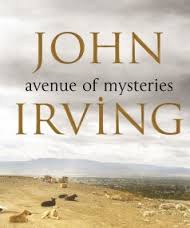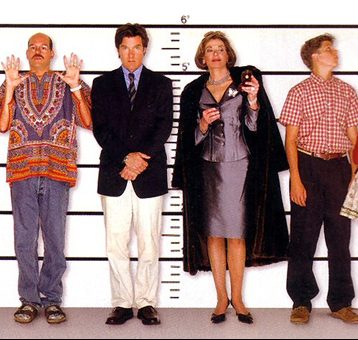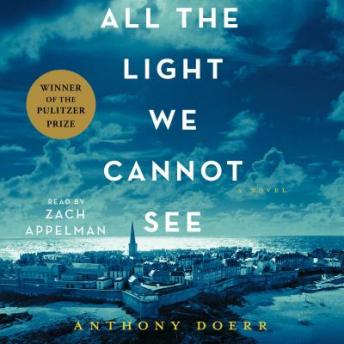Mind Mapping for the Novelist
Since many of you are in the throes of NaNoWriMo, here’s a reprint of a post I wrote years ago discussing how helpful mind-mapping is and how you might use it to spur your creativity and work through your plotting ideas.
And, of course, any writer can utilize these techniques to help come up with great plot and character elements for any story.
Brainstorming ideas seems to be one of the hardest stages in the writing process for many novelists. As I discussed in a previous post, this storm of ideas that flash and thunder in our brains often appears unruly and difficult to harness.
I introduced the practice of mind mapping, which is used across many disciplines—such as in classrooms for essay writing and in business meetings to problem-solve. Mind mapping can be used in just about any situation when ideas need to be reeled in and transformed into practical application.
Mind Map on the Macro and Micro Levels
I’ve never seen anyone specifically focus on novel structure or fiction plotting via mind mapping, so I’m going to show you ways I feel mind mapping can be useful for the novelist. The beauty of this technique is in its versatility. You can work on your novel on a macro or micro level. You can create a mind map for every major (and even minor) character, for all your main plots and subplots, and for other aspects like historical research and setting.
Going deeper, you can merge mind maps, which I’ll explain in a later post. But first, let’s look at some basic mind maps you can create to help you get your creative juices flowing and bring order to chaos.
Brainstorming Characters and Theme Together
I’m a character-driven novelist, so I always first start with character ideas along with theme. To use an example, let’s take a look at my novel Someone to Blame. You can tell by the title what the theme of this novel is. I wanted to explore blame from every angle, and what I had in mind, loosely, was to do a psychological takeoff of Agatha Christie’s novel Murder on the Orient Express.
I had already done a spinoff of her novel And Then There Were None (Innocent Little Crimes), so this novel of hers was on my mind to do next. I had a character, Billy Thurber, whom I wanted to be not my protagonist but the catalyst for exploring this theme of blame. I planned to set the novel in a small coastal town in present day.
I took out a large piece of paper and wrote “Billy Thurber” in the middle (see my previous post on how to create a mind map). From there I drew spokes in a circle leading out from his name. I brainstormed different things other characters in the book might blame on a drifter who comes unwanted into a judgmental small town.
I asked the question: “Why would someone want to kill or hurt Billy? Because they think he ____.” I thought of incidents Billy could be blamed for: theft, fire, blackmail, kidnapping, rape, murder, that would foment jealousy, rage, paranoia, fear. Once I had all these ideas floating around Billy, I started to hone in on these incidents and ideas.
I then came up with characters that would embody these different kinds of blame and connected them (using “spokes”) with the situations that could develop into plot points for the story. What resulted was a population of diverse members of a community—from a fisherman to a retired couple to a sheriff to a teenage girl desperate for love and affection. I thought: Who could accuse Billy of theft and why? What circumstances could I create to make him look guilty?
All these ideas became spokes connecting to the various ideas on the page. For instance, I came up with a drunk motel owner, bitter over his divorce, looking for trouble, who blames Billy for his motel fire (which he himself sets, hoping to collect the insurance money so he can keep from going under with his motel repairs and alimony payments).
Focusing on Theme in Your Mind Map
The key to brainstorming a strong plot is to explore the themes you want to bring out in your novel. Your characters embody the themes, and you want some character or characters to take one side of an issue and other characters to take an opposing side.
For example, If you’re writing a novel that explores the death penalty, think about mind mapping that theme and all the various opinions—pro and con—on the issue. Think of the kinds of characters that might embody each opinion, and give them a valid reason for it. Ask those “why” questions (see my post that tells how to do this).
Then, on the map you are creating, make notes alongside each character with ideas about their background and personal history that contribute to that deep-seated belief they have about capital punishment. Maybe one character had a friend who was wrongly accused of murder and was found innocent after years of prison or even being executed. Maybe another character had a child murdered, and the murderer is now free due to some legal loophole.
I hope you can see how characters should be created and grow organically around the premise and themes of the novel you are writing. You can either start with the theme in the middle of the map, or a character you want to embody something regarding the theme.
When You’re Not Sure What Your Themes Are
If your novel isn’t heavy on theme, or you’re not sure yet just what themes will arise (and there always is some theme or other in every novel, even if subtle), write your short premise or pitch in the middle, like this: A man finds a note in a bottle that washed up on a beach, which leads to him finding the love of his life. Okay, that’s a simple plot concept. You know you want to write a romance, so what themes might come through the story line?
Again, draw spokes outward from your premise and brainstorm ideas of theme that could lead to character development. Ask those important questions about core need and deepest fear. What is that man afraid of? Maybe he’s afraid of love. Why? Because his wife died a few years ago and he doesn’t think he will ever be able to love again. Here’s a theme about being able to love again after pain and loss.
Maybe the woman (love interest) sent that note in a bottle because she was about to kill herself and wanted to tell someone about her pain. What’s her pain? Brainstorm that.
Where could she be located and what would she be doing that would make it the perfect setting for her to put a note in a bottle?
You may end up with a lot of stupid ideas that don’t work, but by doing this creative mind mapping, you will ultimately come up with some good ones. Let your creativity run amok, and don’t censor the ideas you come up with. Have a few laughs over the silly ones, and dig in deeper as you explore the really great ideas. A great way to find themes is to brainstorm.
One Last Point about Characters
Remember, your main character (and hopefully some of your secondary characters) has to grow and change through the novel. At the end, what they’ve learned showcases your theme. Be sure to generate ideas that relate to this character arc. The spokes connecting to your various characters should include ideas of how your character changes, why she changes, and what things caused her to change. This is important for when you mind map plotting and scenes.
I hope this post has given you some inspiration and help with the plotting stages of your novel. I only touched on theme and character, but there are many more novel components you can use mind mapping for.
Have you tried to develop your characters and/or themes with this method? If so, share some ways this has worked for you, or some ideas you came up with by mind mapping. Did you see it help you start pulling the pieces of your story together?












I’ve written a great deal about mindmapping for writers and I speak about it frequently at conferences and presentations. Here’s what interests me: Most of the people I address think that mindmapping is going to be far more useful for fiction writers than for non-fiction ones. (They are wrong. I’ve found it to be equally effective for both types of writers.)
The big reason why mindmapping is so effective is that it takes us into the CREATIVE part of our brains. Other techniques, such as outlining, cast us adrift in the linear, logical part of our brain — not the place where you want to be when you’re writing.